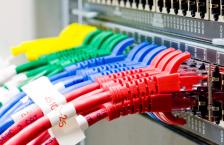Coaxial cables are a fundamental component in many communication and electronic systems, providing a reliable and efficient way to transmit high-frequency signals. One of the key aspects that determine the performance of these cables is their impedance. This article aims to demystify the concept of impedance in coaxial cables, helping both tech enthusiasts and professionals understand its importance and how to optimize it for superior performance.
Understanding Impedance
Impedance, in simple terms, is the measure of the opposition a circuit presents to the flow of current when voltage is applied. In the context of coaxial cables, it’s a critical factor that determines the cable’s performance and compatibility with other devices. The impedance of a coaxial cable is determined by the ratio of the diameter of the inner conductor to the diameter of the outer conductor, and the dielectric constant of the insulating material between them.
To visualize this, imagine a water hose with a wide diameter and a narrow nozzle. The water flows easily through the hose, but when it reaches the narrow nozzle, the flow is restricted. Similarly, the diameter of the inner conductor and the distance between the inner and outer conductors in a coaxial cable determine the cable’s ability to transmit signals without interference.
The Importance of Correct Impedance
Choosing a cable with the correct impedance is crucial as it minimizes reflections and ensures maximum power transfer. When the impedance of the coaxial cable matches the impedance of the connected devices or systems, it optimizes the performance of the communication network. Mismatches in impedance can result in signal reflections, standing waves, and signal loss, leading to reduced performance and reliability of the system.
50 Ohm vs 75 Ohm Coaxial Cables
The most common types of coaxial cables used in electronic devices are 50 Ohm and 75 Ohm cables. The 50 Ohm coax cable is used for professional and commercial applications, while the 75 Ohm coax cable is commonly used in TV cables and other home applications.
The choice between these two types of cables depends on the specific application. For instance, a 50 Ohm cable provides much better results than a 75 Ohm cable for boosting cellular signal. At 100 ft of cable, 50 Ohm is roughly 1.3x more powerful than the 75 Ohm in terms of maintaining signal coming from the same source.
Conclusion
Understanding the impedance of coaxial cables is essential for anyone working with electronic devices. By choosing the right cable for your application, you can ensure optimal performance and avoid interference issues. If you’re still unsure about which cable to choose, consult an expert in the field to help guide you in the right direction.






0